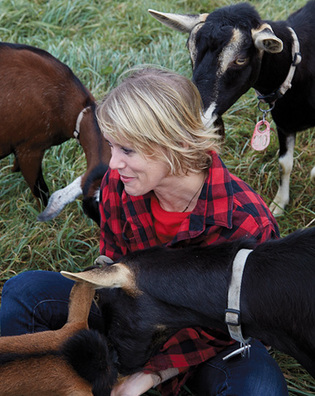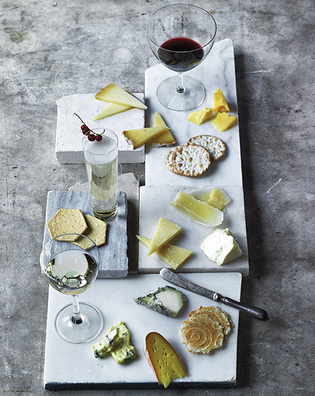 loading
loading
featuresLiz Thorpe: the cheese guruLiz Thorpe ’00 has helped Americans embrace the “weird-looking, smelliest, drippiest, stinkiest, moldiest” cheeses.  Ellen SilvermanLiz Thorpe ’00, who started her cheese career behind the counter, selling cheese, is now a connoisseur who can discern notes of, for instance, “petrol and cow manure.” View full image Ellen SilvermanView full imageLiz Thorpe ’00 has traveled as far as Nepal in search of cheese. There she sampled the cheese of the nak. Nak cheese, not yak cheese; a nak is a female yak. Nak cheese, says Thorpe, “reminds me a lot of bad Swiss cheese from the deli counter, with a sweet, heavy quality. Mushy. I didn’t care for it. But that’s what they had available—those are the animals that live in the Himalayas.” Thorpe’s passion for cheese has landed her on The Food Network, Martha Stewart, NPR, and others. Her finds and recommendations have been in Food and Wine, the New York Times, Men’s Journal, and dozens of other publications and websites. You’ll see more about her this fall, during the rollout of The Book of Cheese: The Essential Guide to Discovering Cheeses You’ll Love. Thorpe wants it to be the one go-to book for cheese enthusiasts. Her own cheese enthusiasms started when she was behind the counter at New York’s famous Murray’s Cheese. After a decade as its first vice president, managing the national wholesale business, e-commerce platform, and other areas, she opened her own consulting company. The book uses well-known generic cheeses as introductory points. Swiss is one such “gateway cheese,” she says. Outside of US delis, though, “Swiss” is not really a cheese. It’s the American name for a range of hard cheeses, often with holes and a nutty flavor, made in the Alpine style like Switzerland’s Gruyère. “A fine cheese, for me,” says Thorpe, “would be a cheese that has a story, a history, a unique recipe and flavor profile. What’s exciting about eating cheese is to start to figure out you might like Gruyère better than Comté, a French take on that style. Or you may like Pleasant Ridge Reserve, made on a single farm in Wisconsin in that style.” She wants everyone to know that that familiar generic cheese—Swiss, cheddar, blue—is just “a jumping-off point.” Fifteen years ago, it took a lot of handholding and conversation to induce Americans to try the cheeses that are now trendy. “People were very freaked out by cheese that looked and smelled weird,” Thorpe says. But she’s seen the food culture shift, so much so that “the chic cheeses right now are the weird-looking, smelliest, drippiest, stinkiest, moldiest ones.” It was a soft, smelly French cheese called Epoisses that piqued her cheese curiosity in the first place. It’s still her favorite. “It’s spoonable and tastes like meat pudding, with a bright orange rind, and a pungent smell like a fart in a bag,” she says. Then she assures me that “it tastes much milder than it smells.” Meadow Creek Grayson, made in a similar style on a farm in Virginia, is her favorite cheese that nobody’s heard of. “It tastes of caramelized onion and has aromas of petrol and cow manure,” she offers. “I could eat it every day and not get tired of it.” As part of her cheese education, Thorpe has made cheese many times. The first time she was invited to do so was in Vermont. “I had this mind-blowing, amazing experience of getting to make cheese with a farmer on this tiny farm, in the cave he built into the hillside” for aging cheese, she says. The downside: she had partied with friends until 3:00 a.m. the night before. “It was probably two years before I had the stomach to make cheese again,” she says. “My advice would be not to make cheese when you’re hung over.”
|
|
2 comments
-

Dick Hecht, 6:01pm September 25 2017 |  Flag as inappropriate
Flag as inappropriate
-

Sally Durand , 5:55pm October 03 2017 |  Flag as inappropriate
Flag as inappropriate
The comment period has expired.Great article on Liz and cheese (even if the Yale Alumni magazine. It shows Liz's depth of knowledge and commitment to cheese.
Great work Liz! My niece is amazing - a wife, mother of two, and the cheese authority in my life and for many others. I will sip some wine and sniff and eat cheese while reading this definitive and exciting book. Thanks Yale for this tribute to one of your own.